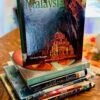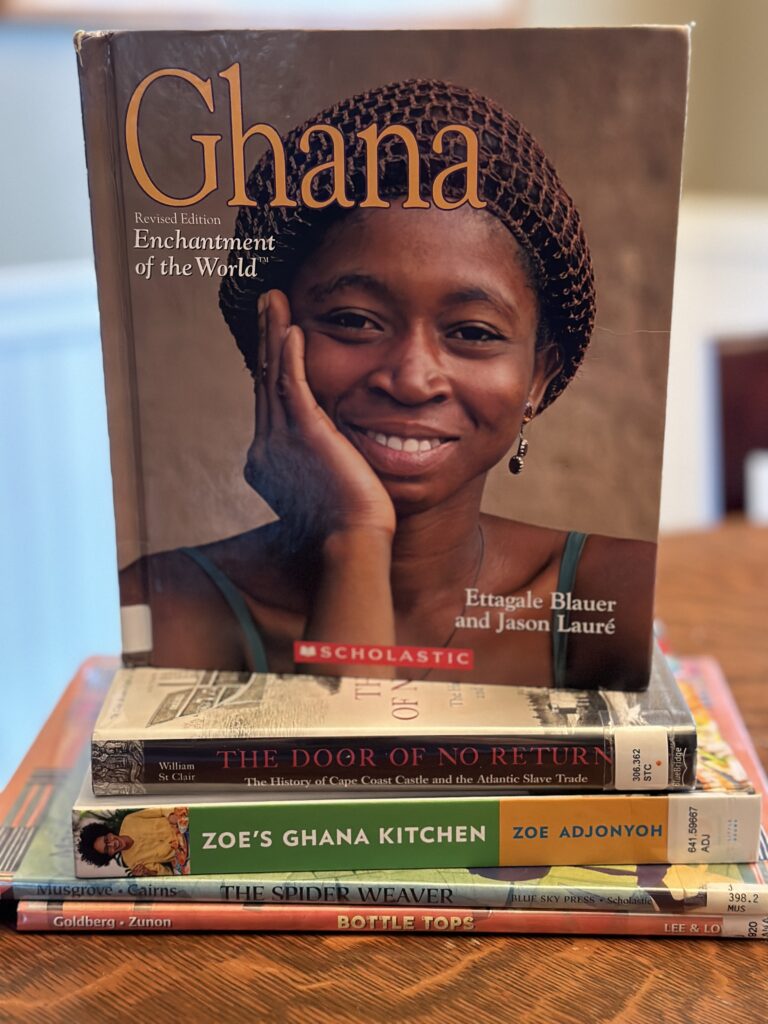
Library Books I am reading for GHANA
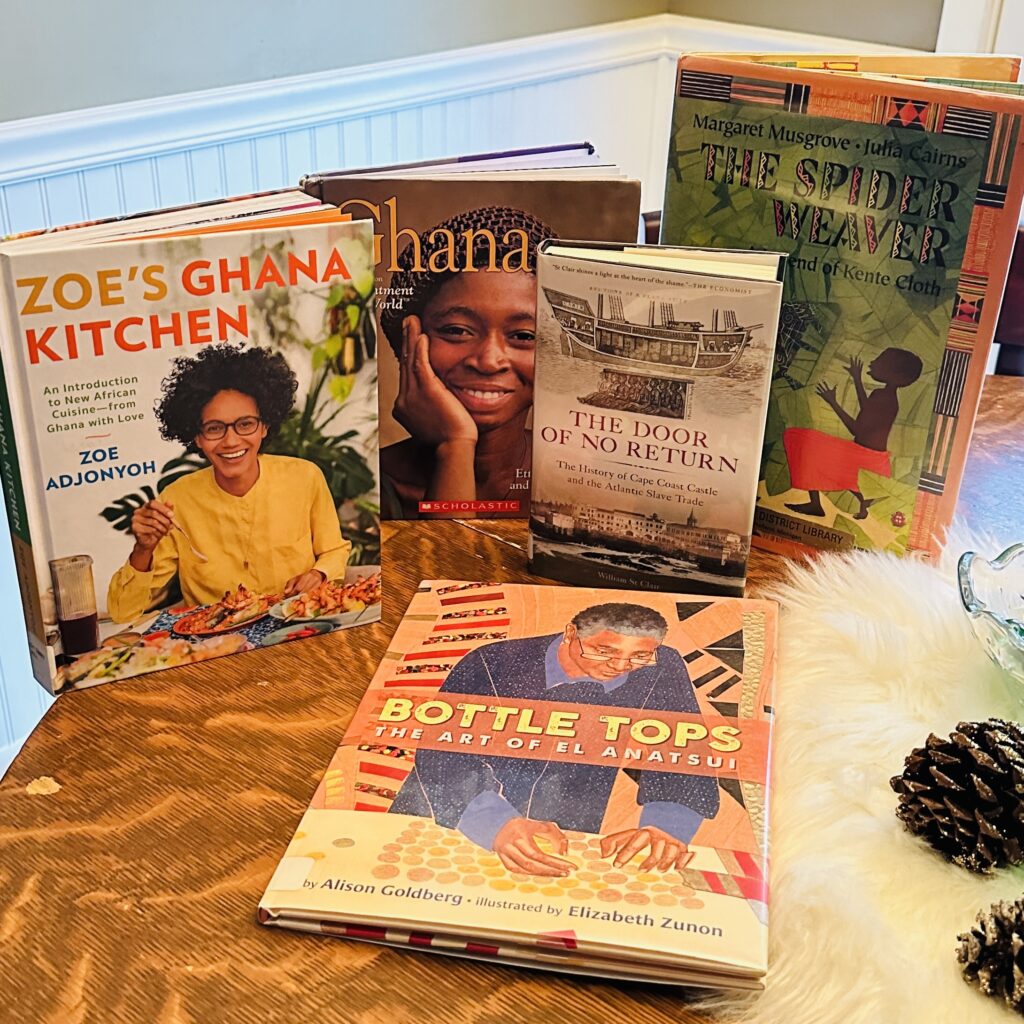
Ghana
January FOOD AND LIT
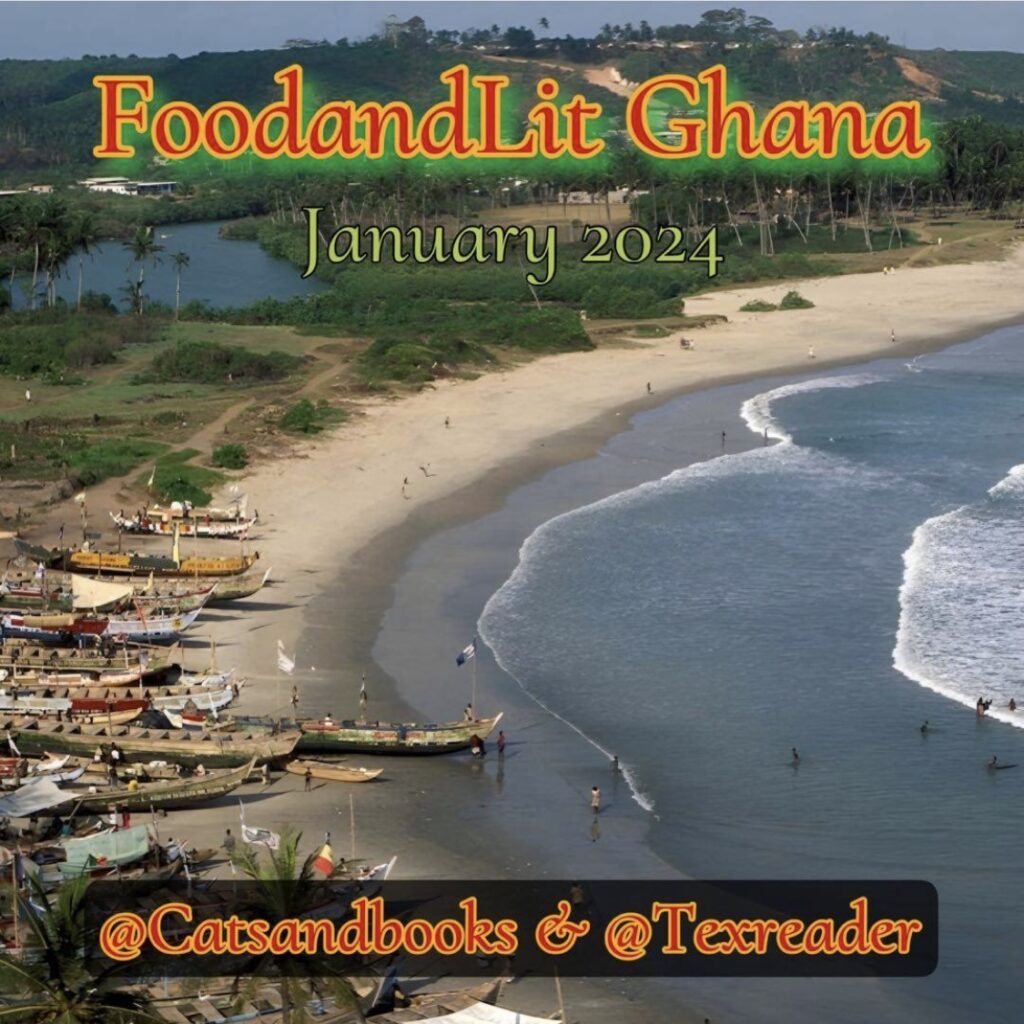
Education: Ghana has 12,630 primary schools, 5,450 junior secondary schools, 503 senior secondary schools, 21 training colleges, 18 technical institutions, two diploma-awarding institutions, and five universities. Most Ghanaians have relatively easy access to primary education, but lack of facilities limits the number who can advance. Education has been a top priority of the government. At the time of independence, Ghana had only one university and a handful of secondary and primary schools. Primary and middle school education is free. Teaching is mainly in the English language.
🇬🇭In addition to being known for its lush forests, diverse animal life, and miles of sandy beaches along a picturesque coast, Ghana is also celebrated for its rich history—its habitation possibly dating from 10,000 bce—and as a fascinating repository of cultural heritage.
🇬🇭Ghana was the first sub-Saharan African country to gain independence from colonial rule, marking a significant milestone in the continent’s history. The name “Ghana” means “warrior king” in the Soninke language, reflecting the country’s past glories and achievements. Today, Ghana is a multicultural society with more than 100 ethnic groups and several religions, including Christianity and Islam.
🇬🇭Ghana is located on the west coast of Africa:
Ghana is situated on the Gulf of Guinea, bordered by Côte d’Ivoire to the west, Burkina Faso to the north, Togo to the east, and the Atlantic Ocean to the south. Ghana has a tropical climate, with temperatures ranging from 21 to 32 degrees Celsius, and two rainy seasons from April to June and from September to November.
FOOD
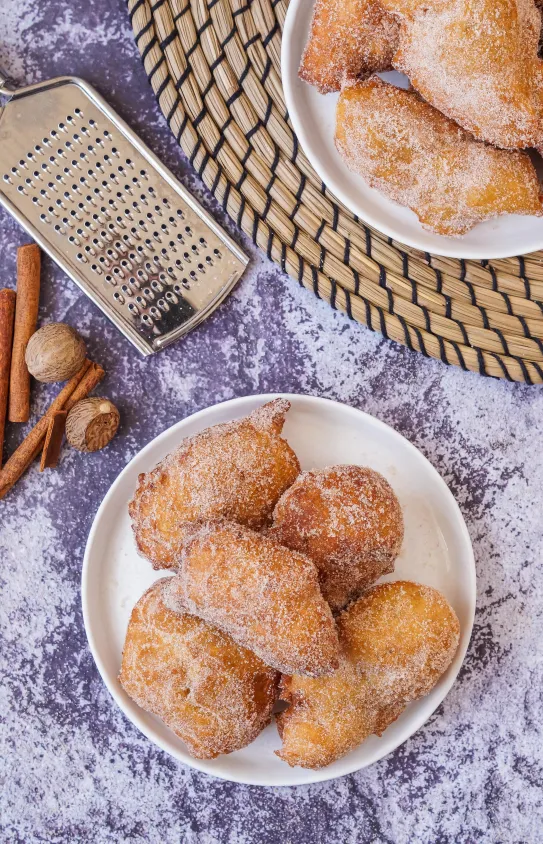
Bofrot (Puff Puff)
A recipe for Bofrot (Puff Puff) from the cookbook, Zoe’s Ghana Kitchen!
Course Bread
Cuisine Ghanaian
Keyword donut, doughnut, fried, Ghana, Ghanaian
Prep Time 15 minutes
Cook Time 10 minutes
Resting Time: 1 hour
Total Time 1 hour 25 minutes
Servings 15 -20 Doughnuts
Ingredients
- 40 grams (1 1/2 ounces) caster sugar plus 50 grams (1 3/4 ounces) for coating
- Cooking salt
- 2 1/2 teaspoons fast-action dried yeast
- 100 milliliters (3 1/2 fl ounces) warm water
- 2-4 teaspoons white wine
- 1/2 egg beaten
- 70 grams (2 1/2 ounces) strong white flour sifted
- 45 grams 1 1/2 ounces plain (all-purpose) flour sifted
- 1/4 teaspoon baking powder
- 1 teaspoon ground nutmeg
- 1/2 teaspoon ground cinnamon plus 30 grams (1 ounce) for coating
- 1 teaspoon vanilla extract optional
- 500 milliliters (18 fl ounces, 1 litre, 1 3/4 pints) vegetable oil for deep-frying
Instructions
- Mix the sugar, 1/2 teaspoon salt, the yeast, measured warm water and wine together in a large bowl and leave to stand for 5 minutes, during which time bubbles should begin to appear as the yeast starts working.
- At this point, add the beaten egg, then gradually mix in the flours, baking powder, spices, vanilla extract (if using) and a pinch more salt and mix together well.
- Cover the bowl with clingfilm and leave to rise in a warm place for 1-2 hours or until the batter has doubled in size.
- Heat the oil in a deep-fat fryer (the safest option) or heavy-based, deep saucepan filled to just under half the depth of the pan to 160˚C (325 F). Test the temperature of the oil with a small drop of the batter- It should slowly rise to the surface and brown slowly.
- Drop a few separate tablespoons of the batter into the hot oil and fry for 2 minutes or until golden brown, then turn each borrow over and fry until evenly dark golden brown all over. Remove with a slotted spoon and drain on kitchen paper. Repeat with the remaining batter.
- Mix the extra sugar and cinnamon together on a deep plate, then roll the borrow around the plate to coat them in the mixture. Serve warm or at room temperature on their own- or with clotted cream if you have it!
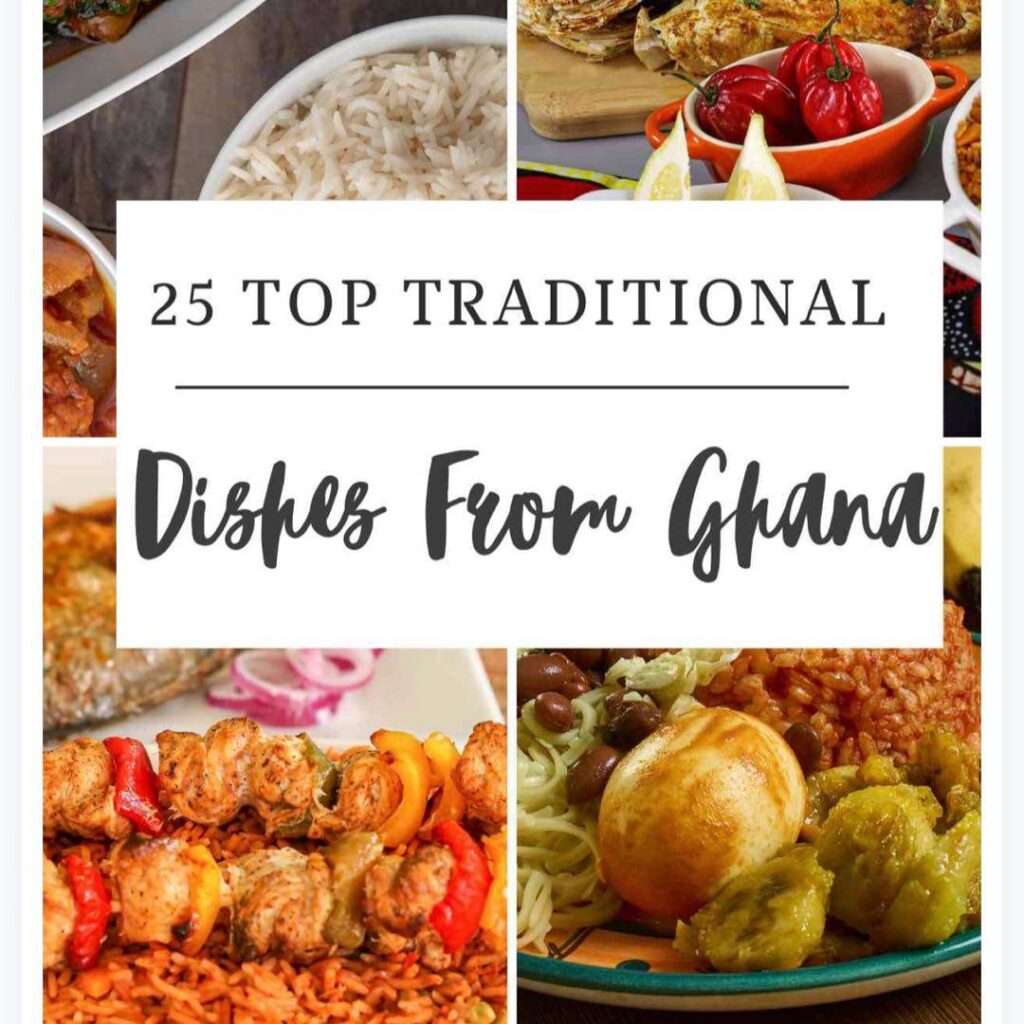
This was new to me information. Once again reminding me that we do not learn much at school……..


